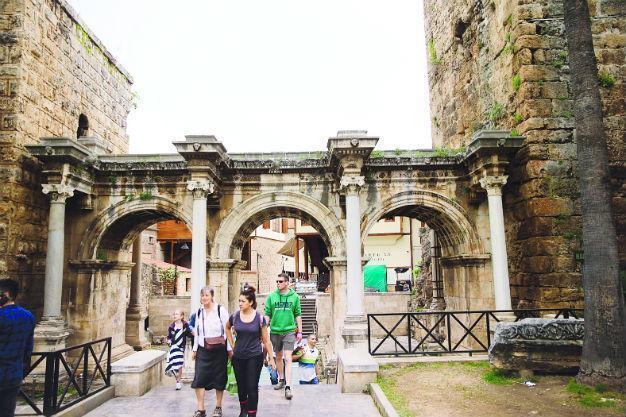Antalya's historic Kaleiçi on its way to UNESCO
ANTALYA – Anadolu Agency

AA photo
Kaleiçi, the historic city center in the southern province of Antalya’s Muratpaşa district, will be submitted to UNESCO in May for inclusion on the World Heritage List. The historic district has a rich history, from the Pergamon Kingdom through the Roman, Byzantine and Ottoman periods.
Muratpaşa Mayor Ümit Uysal said they had carried out works for Kaleiçi to enter the World Heritage List and the district possessed the necessary qualifications.
“The inclusion of Kaleiçi on the UNESCO World Heritage list will revive tourism in the region,” the mayor said.
Uysal said some of the structures of the earliest settlement still survived, and added, “Old temples and mosques are being protected, too. Also, Kaleiçi is a unique center with all qualifications for UNESCO thanks to its historical features; it entering the World Heritage List will contribute to the protection of this important history.”
Kaleiçi Old Town Festival
The Muratpaşa Municipality will also organize a festival, namely the Kaleiçi Old Town Festival, between May 4 and 8. The festival will be attended by representatives from Turkey and nine countries on the UNESCO Old Town List. During the festival, Kaleiçi will be promoted and support for its inclusion on the heritage list will be sought.
The festival will feature musicians from abroad as well as a band of Balkan music and Antalya resident singer Atilla Atasoy. The festival will continue with dancing and street performances, living sculpture performances, street exhibitions, Sufi music and whirling dervish shows and workshops.
Within the scope of the festival, the Antalya Chamber of Guides will organize Kaleiçi tours. The festival will end on May 8 with an oil wrestling contest.
A century-old center
The earliest human presence in the region dates back to half a million years ago from the finds discovered within Karain Cave, 30 kilometers north of Antalya.
Kaleiçi was conquered in the beginning of the 13th century by Seljuk Sultan Gıyaseddin Keyhüsrev.
The region came under the domination of the Ottoman Empire after the 14th century.
The greatest human-caused damage at the site occurred with the demolition of most of the fortifications in a process that started at the end of the 19th century and continued until the 1940s. Modern urbanization starting in the second half of the 20th century caused Kaleiçi to rapidly lose its historical character.
Despite this, Kaleiçi largely protected itself from the multi-story ferroconcrete constructions rising in other Antalya localities and kept a traditional pattern reflecting especially the civil architecture of the 19th and 20th centuries.
After the area was declared a 3rd degree archaeological site in 1973, 473 examples of civil architectural buildings, 72 monuments, 56 wells, 93 gardens and 25 trees were registered.
Kaleiçi’s cultural heritages that will be submitted to UNESCO include the Hardinaus Gate, Sur, Hesapçı Street, Karamolla Mosque, Alaaddin Mosque, St Alypius Church, Dumlupınar School, Rum Millet Bath, Hıdırlık Tower, the Ancient Theater, Murataşa Mosque, a number of traditional houses and many others.
